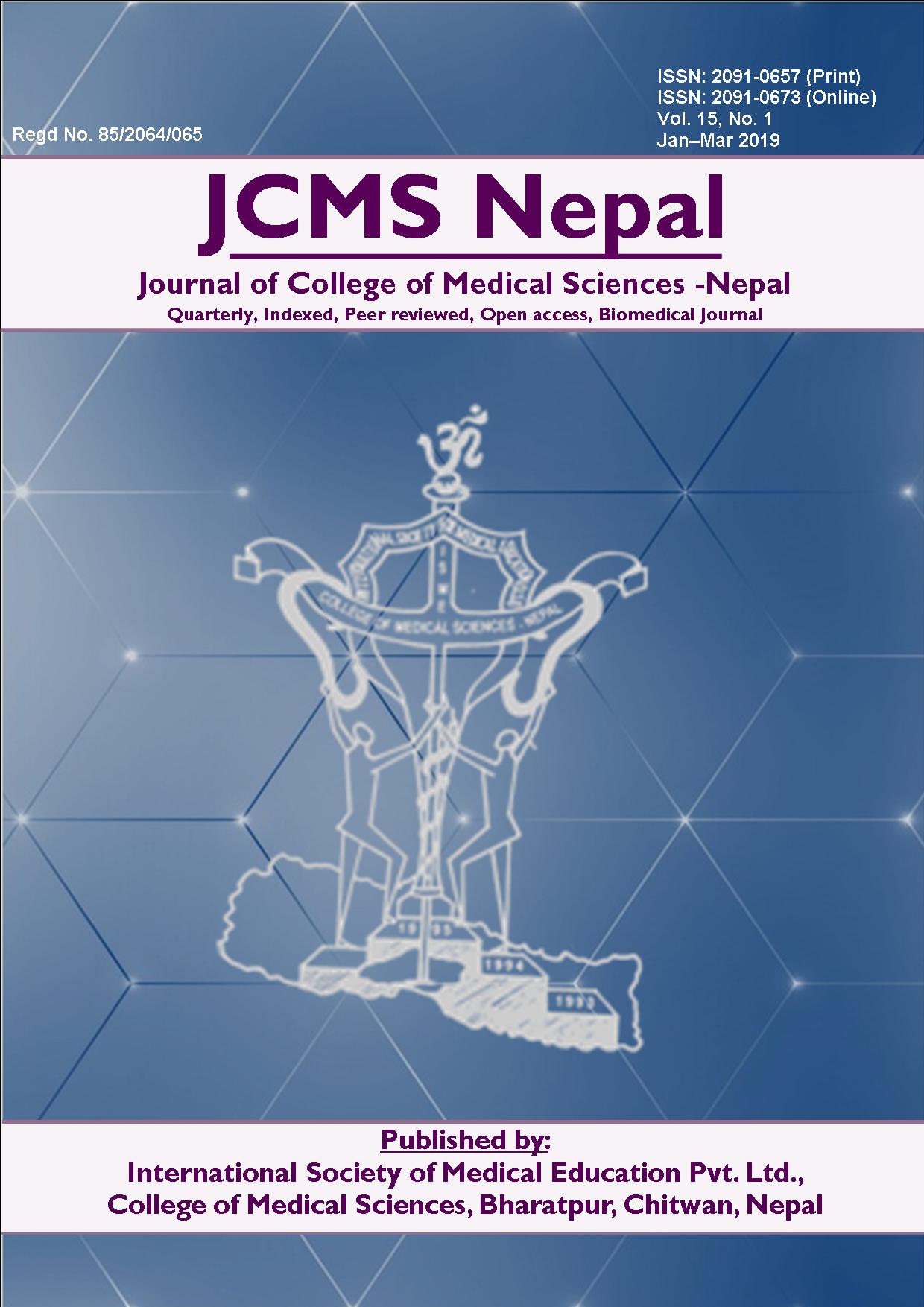Impact of Iron Status on Thyroid Function: A Community Based Cross-Sectional Study in Eastern Nepal
DOI:
https://doi.org/10.3126/jcmsn.v15i1.21022Keywords:
Iron deficiency, Thyroid hormones, Schoolchildren, subclinical hypothyroidismAbstract
Background: Iron deficiency is the most common nutritional deficiency in the world. The relation between thyroid hormones and iron status is bidirectional. The aim of this study was to assess iron nutrition status and evaluate its relationship with thyroid hormone profile among children of Eastern Nepal.
Methods: A community based cross-sectional study was conducted in eastern Nepal. A total of 200 school children aged 6-12 years were recruited after taking informed consent from their guardians. Blood samples were collected and assayed for free thyroid hormones (fT3 and fT4), thyroid stimulating hormone (TSH), serum iron, total iron binding capacity (TIBC) concentration and percentage transferrin saturation was calculated.
Results: The mean serum iron and TIBC was 74.04 µg/dl and 389.38 µg/dl respectively. The median transferring saturation was 19.21%. The overall prevalence of iron deficiency (Transferrin saturation < 16%) was 34% (n=68). The mean concentration of fT3 and fT4 was 2.87 pg/ml and 1.21 ng/dl respectively, while the median TSH concentration was 3.03 mIU/L. Median TSH concentration in iron deficient group (3.11 µg/dl) and iron sufficient group (2.91 µg/dl) was not significantly different. Among iron deficient children 5.9% had subclinical hypothyroidism (n=4). Iron status indicators were not significantly correlated with thyroid profile parameters in the study population.
Conclusions: The prevalence of iron deficiency is high and iron deficiency does not significantly alter the thyroid hormone profile in the study region.
Downloads
Downloads
Published
How to Cite
Issue
Section
License
This license enables reusers to copy and distribute the material in any medium or format in unadapted form only, for noncommercial purposes only, and only so long as attribution is given to the creator.




